LANXESS
Additin® RC 3502 New Organic Friction Modifier Additive
By Mary Moon, Presque Isle Innovations, LLC | TLT CMF Plus November 2019
Like an acrobat poised on a tightrope, a unique organic friction modifier has a perfect balance of properties to give outstanding performance in lubricants for internal combustion engines. This new engine oil additive delivers more miles per gallon of gasoline, which means less fossil fuel consumption and fewer carbon dioxide emissions – a perfect choice for customers concerned with climate change and environmental regulations.
Combustion converts energy in fuel to do work and propel a vehicle, pump lubricant through the engine and overcome friction between pistons and cylinders. Lubricant companies are formulating engine oils with lower viscosities to reduce the work needed to pump the fluid and, thus, improve fuel economy.
Friction modifier additives play a vital role in the development of these new engine oils, and organic additives provide further performance advantages without adding metals, sulfur and phosphorous to lubricant formulations.
LANXESS Additin® RC 3502
LANXESS (Cologne, Germany) is a leading global specialty chemicals company. The Lubricant Additives Business supplies more than 660 synthetic base fluids, additives and fully-formulated lubricants to over 800 customers worldwide. The lubricant additive portfolio includes antioxidants, detergents, anti-wear compounds, extreme pressure additives, corrosion inhibitors, friction modifiers and automotive and industrial additive packages.
According to Caroline Davison, Strategy and Business Development Manager, Lubricant Additives Business, LANXESS Solutions UK LTD, “LANXESS is committed to the long-term growth of the global lubricants industry. Our objective is to help lubricant formulators extend oil life, protect equipment, conserve energy and resources and grow in their markets. In the Automotive market, energy efficiency continues to be a major priority for lubricating traditional internal combustion engines (ICEs) as well as hybrid and electric vehicles (EVs). In response, LANXESS is developing unique additive chemistries for next generation lubricants.
“Our new, patented Additin® RC 3502 lubricant additive reduces friction to improve fuel economy. Adding as little as 0.5% by weight of Additin® RC 3502 enables motor oils to exceed the minimum specification limits for fuel economy relative to a 20W-30 baseline oil in the ASTM D8114 Sequence VIE test. This test measures effects of automotive engine oils on fuel economy using a 3.6 L engine on a dynamometer test stand in a certified laboratory. First, fresh engine oil is conditioned by running in an engine for 16 hours, and fuel economy improvement (FEI-1) is measured. Second, FEI-2 is measured after extended oil aging (109 hours), which models higher mileage driving. The total fuel economy improvement is calculated as FEI-sum = FEI-1+FEI-2.
In typical measurements of formulations with Additin® RC 3502, Sequence VIE test results for FEI-sum and FEI-2 were as high as 5.2% and 2.8%, respectively, and surpassed requirements for next generation ILSAC GF-6 fuel efficient motor oils (FEI-sum and FEI-2 of 4.5% and 2.8%, respectively). Additin RC® 3502 provided comparable performance to a molybdenum dithiocarbamate (MoDTC) friction modifier at 1.0% treat (400 ppm Mo).
“Moreover, Additin® RC 3502 provides a balance of performance properties necessary for lubricating ICEs. In tests of performance retention or friction reduction versus time, as well as resistance to metal corrosion and deposit formation, Additin® RC 3502 excelled. (
Figure 1)
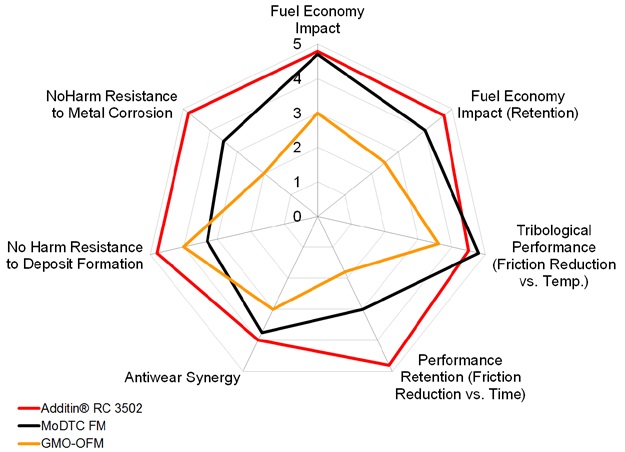 Figure 1. Key attributes of Additin® RC 3502, MoDTC and OMC friction modifiers
Figure 1. Key attributes of Additin® RC 3502, MoDTC and OMC friction modifiers
“Engine oil formulators will appreciate that Additin® RC 3502 is ‘zero SAPS’– contains no sulfated ash, metals, sulfur or phosphorous. The European Automobile Manufacturers’ Association (ACEA) and automotive OEMs placed limits on the use of additives that can ‘poison’ catalytic converters or react with sulfuric acid in exhaust gases to form sulfated ash that clog filters. Formulators can blend Additin® RC 3502 with detergents and other additives that contain these elements and keep their formulations below required limits on SAPS. In our laboratory studies, Additin® RC 3502 demonstrated excellent compatibility with other additives and was synergistic with MoDTC and zinc dialkyldithiophosphate (ZDDP). We are truly excited by the performance capability of Additin® RC 3502 and proud of the commitment and expertise of our scientists that created such great chemistry.
A Molecule by Design
Frank J. DeBlase, Ph.D., Lanxess Fellow, Lubricant Additives Business, Lanxess Solutions US Inc., explained the LANXESS strategy to design a new organic friction modifier. “Lighter oils form thinner lubricating films, so formulators add friction modifiers such as MoDTC and glycerol monooleate (GMO) to reduce friction with the added benefit of lessening wear. To design a new molecule, we considered the behavior of inorganic friction modifiers such as MoDTCs and molybdenum disulfides. When lubricant gets hot enough, all of the MoDTC molecules adsorb on metal surfaces and form hard, ‘glassy’ tribofilms. The friction decreases as these atoms easily shear away - until tribofilms are oxidized or depleted, and the friction increases.
“This loss of retention of friction reduction performance was also found with GMO and some other commercial organic friction modifiers. GMO tends to break down with sufficient heating, likely through oxidative changes of its structure both in bulk oil and its tribofilm. It’s necessary to use higher treat rates to obtain longer drain intervals. But if the concentration of GMO (and other polar organic friction modifiers) exceeds the solubility limit, the molecules separate from the oil. Additin® RC 3502 does not have this treat rate limitation. (
Figure 2)
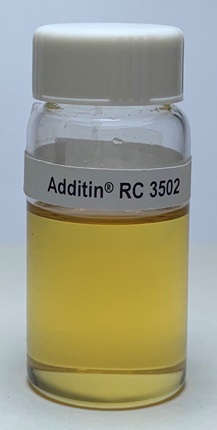 • 2% in SAE 5W-30 (-20C) remains clear after 6 weeks
• 2% in SAE 5W-30 (-20C) remains clear after 6 weeks
• Enhanced solubility acts as a co-solvent to increase additive treat flexibility
• Additin® RC 3502 neat, can be stored for 5 years if kept cool, dry, heat and moisture free
Figure 2. Excellent solubility of Additin® RC 3502 in mineral and synthetic motor oils
“We designed our Additin® RC 3502 molecule with the perfect chemistry to be soluble in oil and adsorb on metal surfaces at low and high temperatures. In technical terms, the molecules are in dynamic equilibrium between the oil and a protective, self-assembled tribofilm on metal. Self-assembled molecules organize themselves like musicians or soldiers marching in a parade.
“We can use enough Additin® RC 3502 in a formulation to replenish the protective films after they wear away because Additin® RC 3502 does not separate from the lubricant. Formulators can use higher treat rates to increase drain intervals. We refer to this behavior as ‘performance retention’.
Additin® RC 3502 can be used in the full range of oil types for engine crankcase and driveline gear lubricant applications. Our initial data show potential benefits for industrial lubricant applications as well.
Friction and Wear
According to DeBlase, LANXESS measured effects of Additin® RC 3502 on friction using a Plint TE-77 High Friction Test Machine (Precision Tribology Ltd.) A round cylindrical pin was rubbed against a lubricated flat pin in reciprocating (back-and-forth) motion under 100 N applied load to simulate a line contact between a piston ring sliding against a cylinder wall in ICEs. In one study, SAE 5W-20 fluids were compared at 135 C. A 1% treat rate of Additin® RC 3502 reduced the coefficient of friction from 0.09 (no friction modifier) to approximately 0.045 during an extended test of 100 hours (more than 4 days). With a 1% load of GMO, friction was approximately 0.6 for the first 24 hours, but then steadily increased as the GMO effect diminished. (
Figure 3)
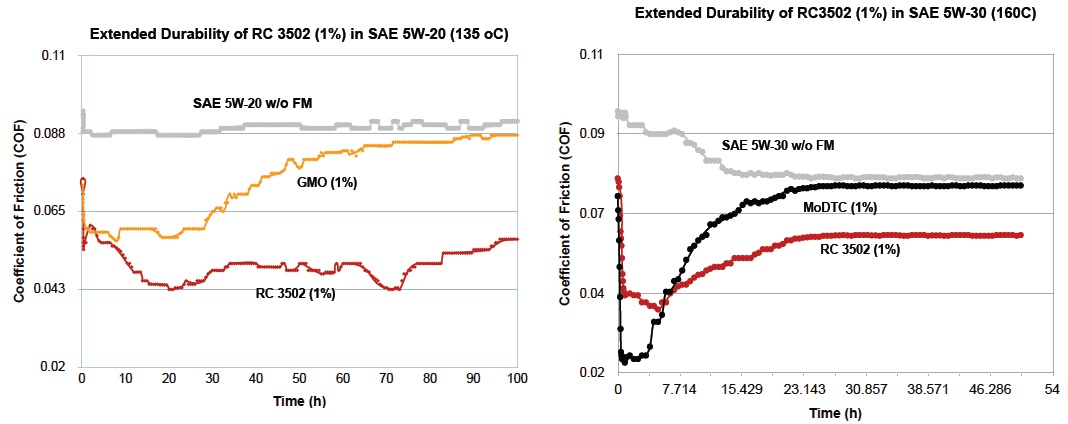 Figure 3. Excellent durability performance of Additin® RC 3502 over time
Figure 3. Excellent durability performance of Additin® RC 3502 over time
Similar trends were observed for SAE 5W-30 oils at 160 C. A 1% treat rate of Additin® RC 3502 significantly reduced friction during a 52-hour test, while 1% MoDTC lowered friction only during the first 24 hours.
LANXESS also used the Plint to study fluids lubricating actual piston rings sliding on sections of cylinder walls. These results for engine parts supported those obtained with standard test specimens.
In another study, the ASTM D4172 Four-Ball Method was applied to measure effects of Additin® RC 3025 on wear preventive properties of lubricating fluids in a sliding contact. A single steel ball under a 40 kg applied load was rotated at 1200 rpm against a trio of fixed balls for 60 minutes. Optical profilometry was used to visualize and measure wear scars.
The experimental control was an SAE 5W-30 fluid with no antiwear additives (wear scar diameter 0.895 mm). With ZDDP at a treat rate of 0.06% (P), wsd was 0.505 mm, and the scar was shallower and smoother than the control case. Adding both 1% RC 3502 and ZDDP gave the smallest (wsd 0.414 mm), shallowest, smoothest wear scar. These results showed that Additin® RC 3502 and ZDDP were compatible. (
Figure 4)
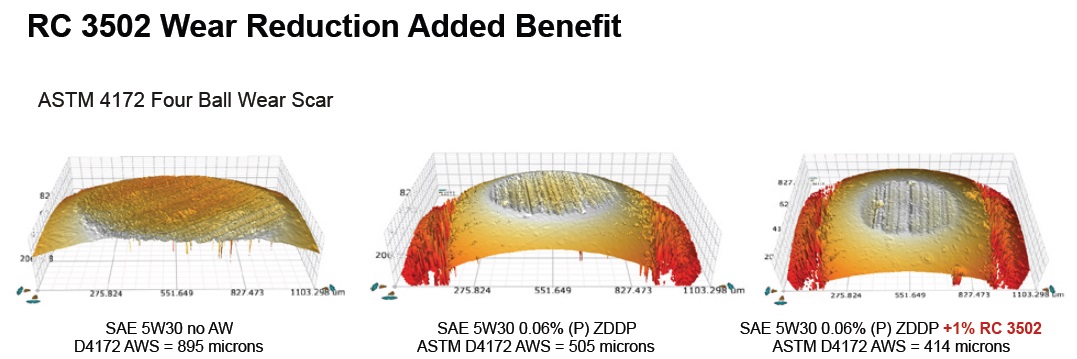 Figure 4. ASTM 4172 Four Ball Wear Scar Optical Profilometry Analysis
Figure 4. ASTM 4172 Four Ball Wear Scar Optical Profilometry Analysis
To simulate combinations of sliding and rolling movements for cams and other components, LANXESS used a Mini-Traction Machine (PCS Instruments). Stribeck curves showed that Additin® RC 3502 reduced friction over a range of temperatures.
Additive Compatibility
A wide matrix of laboratory tests showed good compatibility and no harmful interactions between Additin® RC 3502 and other components of engine and gear lubricants.
Positive synergistic interactions were observed in several cases. In Plint measurements, friction was lower with 1% of a 1:1 blend of Additin® RC 3502 and MoDTC in SAE 0W-20 fluid than with 1% of either individual friction modifier. (
Figure 5)
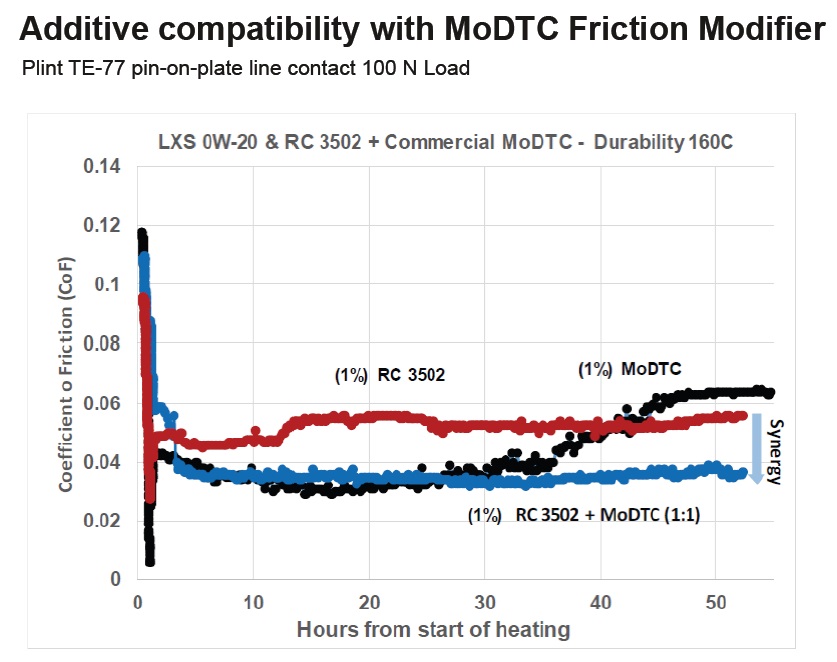 Figure 5. Strong compatibility of Additin® RC 3502 and MoDTC Friction Modifiers
Figure 5. Strong compatibility of Additin® RC 3502 and MoDTC Friction Modifiers
Additin® RC 3502 also displayed synergy advantages and no loss of any performance properties in blends with ZDDP, sulfur-containing antiwear additives and magnesium sulfonate detergents.
Hybrids and EVs
Davison concluded, “We are currently working with our customers who are formulating fluids with Additin® RC 3502 for next-generation vehicles. Hybrid vehicles require engine oils but present some special challenges compared to traditional ICEs. The ICE in a hybrid vehicle does not operate when its electric motor is running, and the engine oil must tolerate greater start-stop challenges than in a traditional ICE vehicle. Additin® RC 3502 performs well at both cold and warm temperatures and provides an antiwear benefit to protect ICEs under these harsh conditions. (
Figure 6)
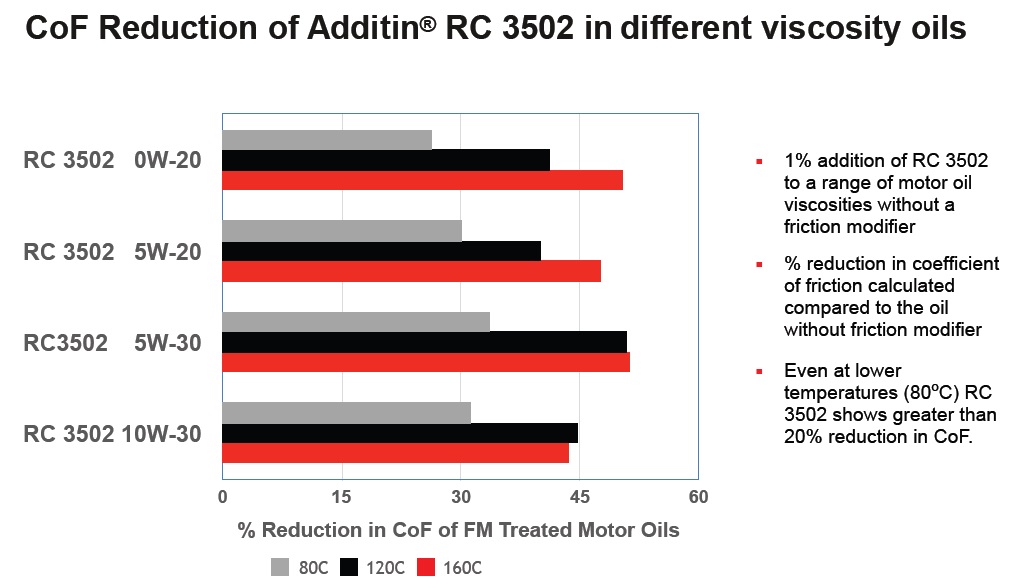 Figure 6. Additin® RC 3502 reduces friction in four different SAE viscosity grades at 80, 120 and 160 C
Figure 6. Additin® RC 3502 reduces friction in four different SAE viscosity grades at 80, 120 and 160 C
In fully electric vehicles, innovative fluids will be needed to lubricate new drive lines and cool batteries. These fluids will require high-performance additives that meet these new challenges and have excellent compatibility with the lubricant and other additive chemistries. SAPS-free, fully organic Additin® RC 3502 is a strong candidate for these new formulations.”
*Additin®, LANXESS and the LANXESS Logo are trademarks of LANXESS Deutschland GmbH or its affiliates. All trademarks are registered in many countries in the world.